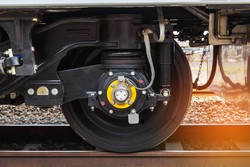High-performance multilayer coatings
The vast majority of engineering components fail due to surface-related issues, including inadequate coating adhesion, cracking and impact defects. To counter this, numerous surface treatments have been developed that mostly consist of multilayered surface systems (MSSs) of varying thicknesses ranging from nano (nanometre) to micro (micrometre) to macro (millimetre) scales. Until now, MSS design has been based on experience, highlighting the need for accurate and detailed models to expedite the design process and enhance performance. Within the EU-funded project M3-2S (Multiscale modelling for multilayered surface systems), researchers made important progress in molecular dynamics and finite element analysis modelling techniques. Project advances included cutting inserts for machining cast iron bars and steel brakes for railways, rollers for forming aluminium alloy sheets for jewellery, biomedicine and food applications, and transmission gears for diverse sectors. Results showed that the newly developed advanced MSSs increased wear resistance, load-bearing capacity and lifespan of the demonstrators. Researchers developed advanced duplex surface systems combining surface coatings with case hardening that significantly increased load bearing and wear resistance. Combining multilayer titanium (TiN) and chromium nitride (CrN) coatings with plasma-based nitriding increased load bearing and wear resistance by more than 3 and 1 000 times, respectively, compared to the currently used monolayer TiN/CrN coating on hardened steel. Improved load-bearing capacity and wear resistance of the new MSSs can prolong the lifespan of many manufacturing products and equipment. Longer component life reduces the need for replacing failed cutting tools, hot working dies, or engine and transmission components, thus reducing machine downtime. In addition, long service life of surface-engineered tools and components minimises the chances of product failure, thereby saving on the reuse of natural resources. Use of a specific high-hardness multilayer coating also enables dry machining, which eliminates environmental concerns related to the use and disposal of cutting coolants. In addition, novel dies coated with a multilayer coating with self-lubricating layers make sheet metal forming possible without use of lubricating oil. The new M3-2S multi-scale modelling technique should facilitate the design of MSSs in many industrial sectors, maintaining Europe’s competitiveness in the surface engineering market.







